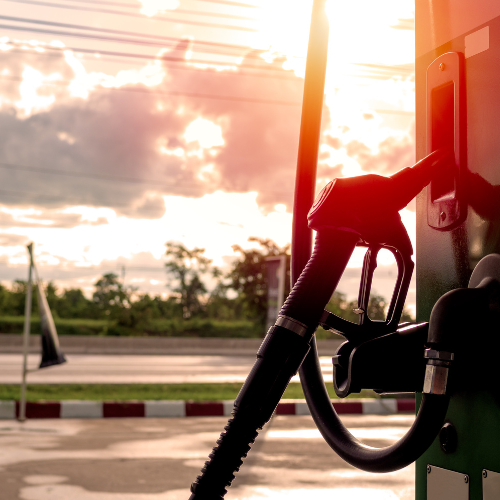
Hedging Exposures to Fuel Price Volatility
Fuel is one of the largest and most difficult expenses to predict and control for companies that utilize a fleet of vehicles. High fuel costs have resulted from rising crude oil prices throughout 2022, compounding expenses among fleets. Even as prices begin to stabilize, it’s still important for fleet managers to conserve fuel, maximize efficiency and reduce vehicle emissions to minimize associated costs.
Implementing certain company policies can help reduce fuel costs and make fleet operations more efficient. Here are some ways to manage fuel usage within a fleet:
- Monitor driving patterns. According to the U.S. Department of Transportation, there can be as much as a 35% difference in fuel consumption between a good and poor driver. By monitoring speeding, braking and acceleration patterns, fleet managers can determine whether or not their drivers are operating efficiently.
- Cut engine idling. Idling can burn a quarter to a half gallon of fuel per hour. Drivers should turn off the engine while waiting or making deliveries and while stuck in traffic. They also shouldn’t idle to warm up the engine.
- Improve route efficiency. Utilizing GPS tracking technology can streamline operations and reduce fuel consumption by ensuring that drivers aren’t wasting their time and fuel driving back and forth during work.
- Provide driver training. Since drivers are at the wheel of fleet operations, it’s imperative they have proper training regarding habits that can improve their fuel efficiency on the road. Specifically, drivers should practice keeping gears low when accelerating, changing gears early, driving at slower speeds and reading the road more efficiently.
By implementing various policies and practices, companies can make their fleet operations efficient and limit fuel expenses. For more information, contact us today.
Mold and Bacteria Concerns for Commercial Buildings
Legionella—a waterborne bacterium found in rivers, lakes, reservoirs and untreated artificial water sources—as well as mold can flourish in plumbing and heating, ventilation and air conditioning (HVAC) systems that aren’t properly maintained. The COVID-19 pandemic may have created optimum conditions for Legionella and mold to thrive in commercial buildings that experienced extended shutdowns or reduced operations.
As employees return to the workplace, it’s imperative that buildings are clear of Legionella and mold. After all, these substances can pose serious health concerns for those exposed. Some health risks include:
- Legionnaires’ disease
- Rashes
- Immune system failure
Before occupants return to commercial buildings, the following measures should be taken:
- Flush water systems. Stagnant water systems can be a breeding ground for Legionella. Hot- and cold-water systems should all be flushed, including sinks, showers and toilets.
- Clean cooling towers. Removing slime, debris and biofilm can help reduce the buildup of Legionella.
- Treat water-using equipment. Water fountains, icemakers, pools, spas, sprinkler systems, eyewash stations and other water-using equipment should all be flushed and treated before reopening.
- Maintain indoor humidity. Mold flourishes in humid conditions. To reduce mold growth, relative humidity should always be lower than 60%.
- Assess the building before occupants return. A building and environmental health professional should inspect equipment and surfaces for mold that may have developed during shutdowns or reduced operations.
Keeping occupants safe as they return to commercial buildings should be a priority for all organizations.

